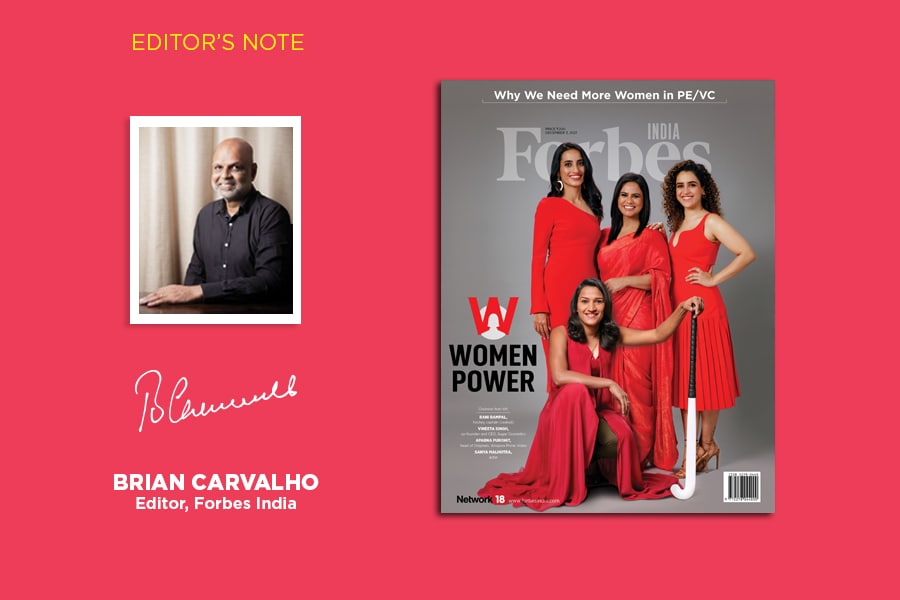
Forbes India W-Power 2021: Role models who will inspire a generation
The purpose of the W-Power list is to ensure a bagful of success stories will beget a million more

Last fortnight, when the business media went to town after Nykaa Founder Falguni Nayar emerged India’s wealthiest self-made female billionaire, a section of social media wonks wondered whether playing up ‘female’ in the screaming headlines was indeed necessary. After all, when male moneybags hit the big time, their gender gets short shrift.
In a similar vein, every year a section of the Forbes India team—yours truly included—ponders the merits of a listing of women achievers. The argument: Why do we need a separate listing based on gender, why not focus instead on creating diverse lists in the first place?
It’s a valid argument. However, the reality—not just in India but much of the globe—is that women power in startups, investing firms and boardrooms is still inadequately represented. Hence, the counter is that whenever a woman proves to be an outlier and emerges on top in a male-infested playing field, more reason to make a splash. Also, such women achievers who overcome considerable odds along the way are just the role models who will inspire a generation of women to break the mould, and to aspire and think big.
The purpose of the Forbes India W-Power list is precisely that: To ensure that a bagful of success stories will beget a million more. Looking at the numbers, there’s still a long road to traverse. A recent study by EMA Partners, a leadership advisory firm, pointed out that as of early August, India had just five unicorn founders who were women—that’s out of 136 founders of 56 unicorns.
The scenario is not much different at traditional companies. Another EMA diversity study found out that only six of the top 250 corporate CEOs were women in fiscal year 2020. In fact, the percentage of women CEOs/MDs had dropped to 2.4 percent in that year from 4.1 percent in fiscal year 2016, which had 10 women CEOs among 245 companies.
(This story appears in the 30 November, -0001 issue of Forbes India. To visit our Archives, click here.)





